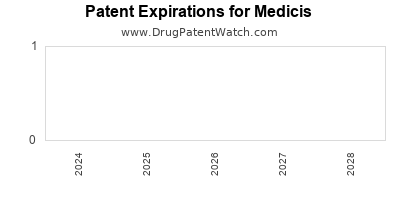Medicis Company Profile
✉ Email this page to a colleague
What is the competitive landscape for MEDICIS, and what generic and branded alternatives to MEDICIS drugs are available?
MEDICIS has one approved drug.
Drugs and US Patents for Medicis
| Applicant | Tradename | Generic Name | Dosage | NDA | Approval Date | TE | Type | RLD | RS | Patent No. | Patent Expiration | Product | Substance | Delist Req. | Exclusivity Expiration |
|---|---|---|---|---|---|---|---|---|---|---|---|---|---|---|---|
| Medicis | THEOLAIR | theophylline | TABLET;ORAL | 086399-002 | Approved Prior to Jan 1, 1982 | DISCN | No | No | ⤷ Sign Up | ⤷ Sign Up | |||||
| Medicis | THEOLAIR | theophylline | TABLET;ORAL | 086399-001 | Approved Prior to Jan 1, 1982 | DISCN | No | No | ⤷ Sign Up | ⤷ Sign Up | |||||
| >Applicant | >Tradename | >Generic Name | >Dosage | >NDA | >Approval Date | >TE | >Type | >RLD | >RS | >Patent No. | >Patent Expiration | >Product | >Substance | >Delist Req. | >Exclusivity Expiration |
Similar Applicant Names
Here is a list of applicants with similar names.



